Social Media can be a tricky place to market your product or service. Brands may often publish daily posts just for the sake of posting. Lucky for you, today we are going to share with you an effective method of coming up with a social media strategy to make your brand win.
Let’s say you own a 2-year-old tech startup that answers problems about babysitting: How can mothers have a professional career and still keep a close eye on their baby?
You’ve created the perfect product: a state-of-the-art baby monitor that moves when your baby is awake. Parents can watch their kids while they’re at work, and even play with them through the robot baby monitor.
You’re getting decent traction and people around your area know about your creation. After two years of marketing your product in the city, it’s time to expand. It’s time to make yourself known worldwide.
But how?
You never really thought about updating that Facebook Page you created months back, but it’s probably about time that you did. What do you do? Where do you start? What should you include?
Creating a social media strategy can be a daunting task, especially for a founder such as yourself. However, after developing and executing a killer social media plan for your startup, you’ll start to see how social media is an integral part of your business–not only to market your products or services, but also to listen to what your audience is saying, and how to keep them delighted in your offers.
Are you ready to create a great social media strategy? Yes? Great! Let’s proceed to…
STEP 1: Identify your social media goals or objectives
Why do you want to have a Facebook Page, or a Twitter Timeline, or an Instagram Feed? How do you want to reach your audience? What kind of content do you will make your audience engage with you?
These questions can help you iron out your social media goals.
Creating one goal or a set of goals can help you find out what kind of strategy works and what doesn’t. You can also set your Key Performance Indicators (KPIs). These goals should be similar to your overall marketing strategy so that you drive back to your own business objectives.
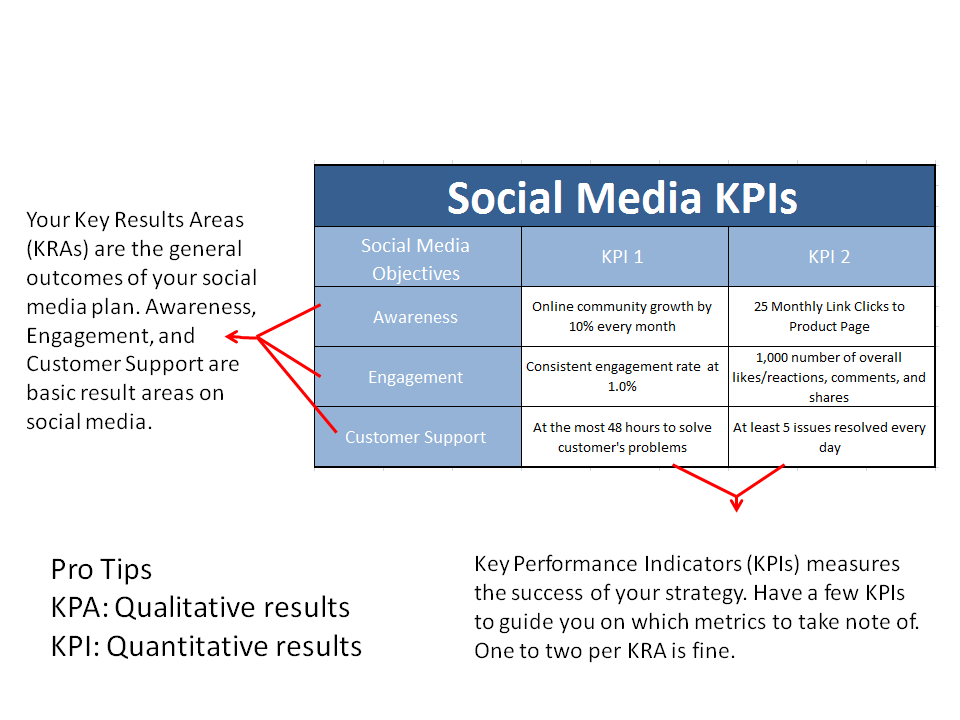

This is a simple KPI chart which is centered towards engagement and customer support. Your KPIs can be as simple as this, or you can add other factors like Lead Generation and Product Innovation.
Without identifying your social media goals, you’re running around the internet without a finishing line to reach.
STEP 2: Create a Buyer Persona
Your ideal customer, or buyer persona, is the type of person who will most likely become a fan of your brand and follow you on your social media pages. Write down their basic information like age and occupation, and dig down into their likes, dislikes, spending habits, online habits, pain points, motivations, and what kind of content they like to share.
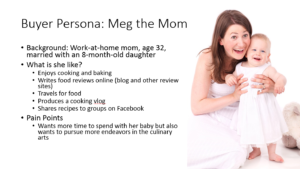

A basic buyer persona can narrow down the type of people you want to talk to through social media. You can note their background, their interests and hobbies, their frustrations, and what motivates them.
Facebook makes it easier to target your ideal audience when you create a page. Right before your page comes to life, the social networking site brings you to a page with options that you can tinker with.
Called the “Preferred Page Audience” page, you can select one or several locations, an age group, gender, several interests, and even language so that you can pinpoint the right audience for you.
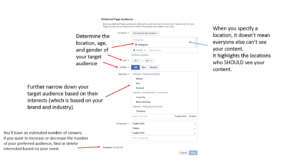

Preferred Target Audience on Facebook can help you identify who you should be talking to.
It’s important that you set this up before your page goes live. That way, your brand can enter someone’s radar with much more effectiveness.
STEP 3: Enhance Your Strategy with Data
Knowing your goals and identifying your buyer personas are well and good, but how do you pinpoint your audience and capture their attention?
More importantly, what are your competitors doing?
This is where data comes in, and it will guide you as you execute your strategy.
You can research about the industry you’re rooted in as well as the online and buying habits your prospective customers have.
You can also do your own research with a bit of social listening. Type in the hashtags or keywords your brand could be found in, and see the commentary of users, competitors, stakeholders, and even prospective buyers on how they view the industry, your type of product, and your competitors, among others.
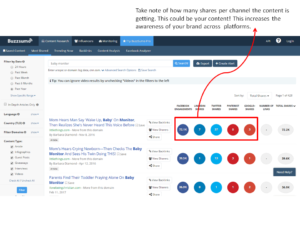

What do people talk about when they search ‘Baby Monitor’? Going through Google Search isn’t enough since you don’t know just how many people are talking about your product. BuzzSumo is a powerful online tool that allows you to see where different kinds of content are frequently going to, and how many users are engaging with them. When you or your competitor (or both, to do a comparison) share content, you can follow where it’s going through this site. You can further analyze why one content has more engagements than the other, or why your content is more popular in a channel you didn’t expect it to be in.
Your data should be quantitative, sourcing surveys, studies, and quotes from notable key leaders in the industry. It should strengthen your belief that your product has a story to tell and you’re extending it to users on social media.
Collecting data might not be the most glamorous part of any social media strategy, but it does have compelling benefits that can guide you towards a better plan and better engagement in the future.
For one, data helps you find out the issues and perceptions your target market has towards the industry you’re in and the kind of product(s) you’re selling.
Secondly, collecting accurate data and sharing it to your target audience means you are a trustworthy source of information about your industry. You can create better posts, promote your product innovations, and through all this, improve the lifestyle of your target audience
Collecting new data gives you different details about your audience, such as what channels do they stay in the most, what do they do in those channels and what do they feel about your industry. This is the more tedious parts of creating a social media strategy, but it is one of the most important, if not the most important. When you’re done doing some data-digging, you can move on to…
STEP 4: Design Campaigns
It’s not enough that you have good ideas for content. Posting an image does not explain the goals of your brand. Like any plan, there needs to be a story to follow, and your strategy is no different.
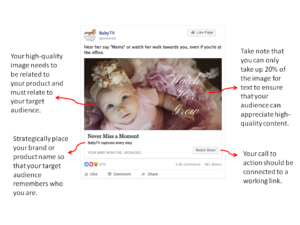

Awareness campaigns are one of the most common kinds of paid campaigns on social. When you want to introduce your brand across social media channels, an awareness campaign usually leads to organic results, such as: link clicks, increase in likes, and engagements. Pro Tip: Use videos or have a “Watch more” call to action to link to a video as moving visual content is more effective these days.
After some serious data-digging for your buyer persona, you now need to break down your goals into tactics. There are dozens of ways to get your social media strategy going, but for now, let’s just mention a few popular campaign types. You might want to think of the following if they fit your goals:
- Talk to influencers to help you promote your social media endeavors.
- Plan out contests to engage your audience
- Create a series explainer videos using that talk about subject matters related to what you do using Canva video editor.
- Involve your audience with Twitter chats to engage them in light conversation about their problems
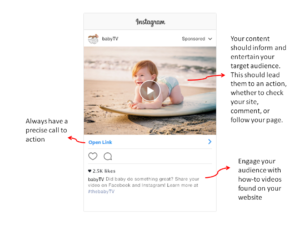

Explainer campaigns, commonly known as how-to’s, are a great way to engage your audience through providing a thorough and specific step-by-step procedure with compelling visuals that support the text on the post.
Part of your campaign strategy is choosing the platform(s) you want to be more active in. Will you use Facebook, Twitter, Instagram, Snapchat, or Pinterest? Or all five? Or will you just use three from the list? Each platform has its unique way of sharing content and engaging your audience, so you have to think well where you ultimately want to be more visible in.
STEP 5: Create a Content Plan and Editorial Calendar
When you’ve planned out your campaign, you need to create a content plan and when to schedule your posts.
Here are some questions to guide you when you do your plan and content:
- What types of content do you plan to publish?
- Your own posts native to social media
– Share links that are of value to your audience
– User-generated content - What time and what days could you get more engagements (likes, favorites, shares, retweets, etc.)?
- How often will you post content?
- How will you promote your content?
- What is the target audience for your content?
- What is the tone of your content?
– Funny
– Authoritative
– Welcoming


You and your team can brainstorm to create a content plan. When you’ve given a lot of topics, then you can proceed to work on an editorial calendar. When you have an excess of ideas and topics, you can keep the content plan and reserve the topics for later dates.
After answering these questions, you can create your editorial calendar.
An editorial calendar should have the following details:
- Type of post
- Caption
- Image
- Date and time of posting
Most editorial calendars are done monthly, but other marketing groups plan out as long as three to six months. Depending on your needs and how much content you can do, your editorial has to be flexible in add in trending news in your industry, or celebrate national or international observances like Christmas or Mothers’ Day.


Make sure your calendar is understandable and flexible.
You can opt to skip some days if you feel that your post might not get the right engagement. What is important is your content drives your audience to the very message of your product or service, but is at the same time educational and entertaining for anyone viewing your content.
STEP 6: Publish, Analyze, and Refine
Finally, we’ve arrived at the last stage of your social media strategy!
Depending on your platform you can get automation software like Hootsuite or Buffer, so that you won’t have to spend a lot of time posting on your platforms every day.
Be strategic though: while you can post automatically, your replies should not—as much as possible. Most audiences prefer talking to a human behind the computer, and would want a non-formulated answer. Dedicate several times during the week to answer customer queries and reply to public comments. This way, your audience can see you’re busy, but you have time to tend to their needs.
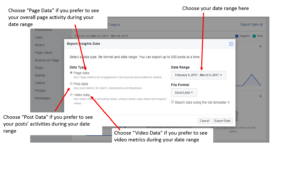

Exporting data from social networking sites is a must if you need to have a data-driven report. Click ‘Insights’ on your Facebook page and export data.


You can export your data from Facebook to see how effective your strategy is
So we’re done now, right?
Almost! But not quite.
The social media plan is not yet over when you’ve published your post. This is a monthly task. You need to analyze several metrics and evaluate if your posts are effective or not. Take note of, for example, engagement rates, where your engagement is coming from, who is viewing your content, and link clicks, just to name a few.
Sounds complicated? Don’t worry; Facebook’s got you covered.
You can export data from Facebook so that you can analyze your page’s activity. Other automation software can also deliver monthly reports for you to analyze, but at a paid price. Through data analysis, you can further refine your social media strategy and content plan to maximize and create a community of loyal customers out of your engaged users.
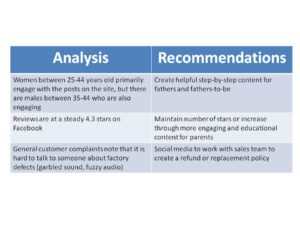

When you create an analysis of your actions on social media, find recommendations to improve your posts, community management, and engagement.
Takeaway Notes
Working on a social media strategy requires dedication and teamwork since you’ll work with data to create meaningful and engaging posts to convert your target audience to prospective buyers or loyal fans for life. This is especially important for continuity and consistency of your communication plan as well.
This doesn’t mean that you have to make it hard for yourself. Once you have your social media goals aligned with your business goals and have some momentum going with creating content your audience loves, you should be well on your way to startup success.
Manny Cuevas
